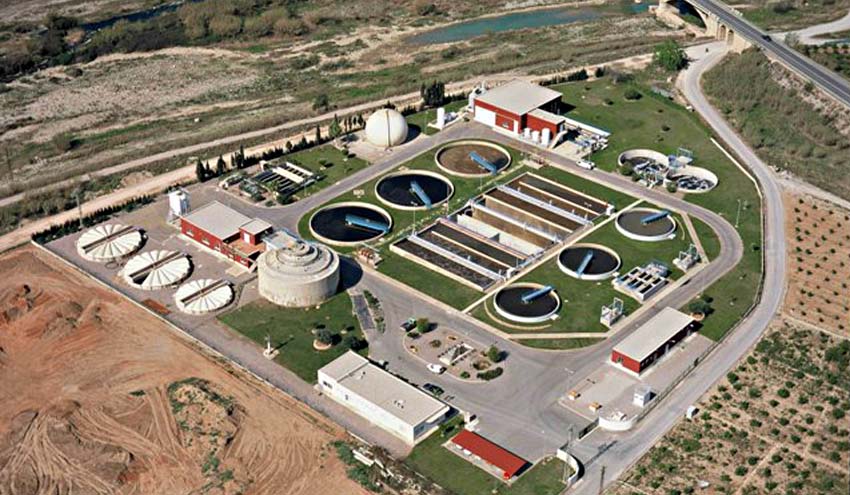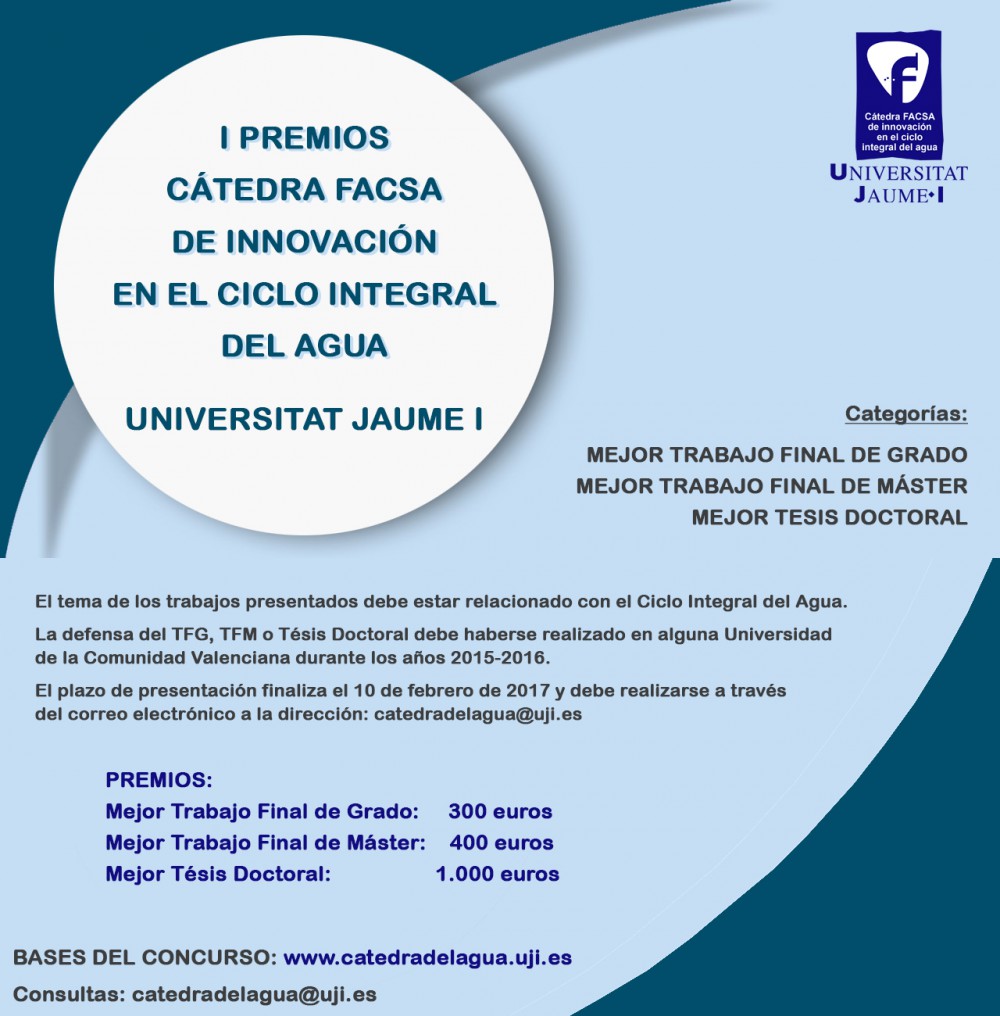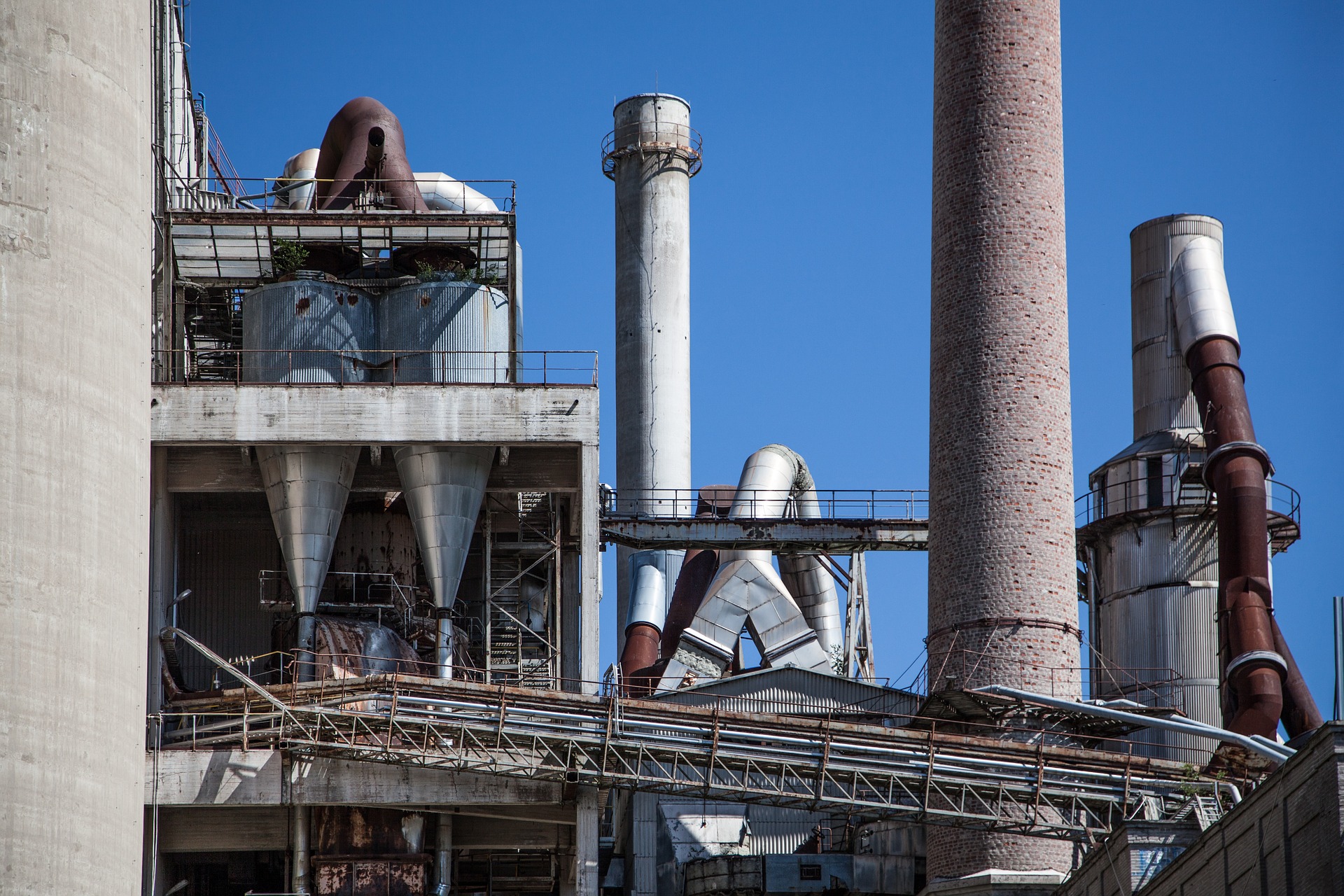
The interdisciplinary research group of Calidad de Aguas, CALAGUA composed by the staff of the Research Institute of Water and Environmental Engineering (IIAMA-UPV) and the Department of Chemical Engineering (IQ-UV), developed the programme LoDif BioControl, that introduces different algorithms that reduce the power consumption of the EDAR up to 40% in the aeration process.
1 june 2016
The energy savings obtained, is built on the supervisory control system, that stablishes the minimum necessary pressure to maintain the oxygen concentrations at desired levels. In this way, the plant manager can configure the application, depending on the characteristics of the treatment plant.
The development of this innovative technique, was motivated by the discovering that maintaining the oxygen concentration at the desired level, with the minimum discharge pressure of blowers, the energy consumption was reduced.
To obtain this saving, the Dr. Joaquín Serralta, member of the IIAMA-UPV points out the need of “maintaining the dissolved oxygen concentration in each aerobic reactor and controlling the blowers’ pressure”. Thus, each group of diffusers should be provided with a dissolved oxygen meter, as well as with an automatic valve. The control system modifies the opening of each valve depending on the oxygen concentration, in a way that if there is so much oxygen in a reactor the valve closes.
Likewise, the treatment plant needs a pressure meter in every group of blowers, as well as one or more frequency inverters to control the rotational speed. All this, with the objective that the control system “modifies automatically the functioning of blowers in order to achieve in every moment the desired pressure”, says Serralta.
Regarding the energy savings, that is the last aim of the control system, the ideal situation is that all the valves are 100% open. Since this is not possible, because the valves movement is the one that allows the maintaining of oxygen concentrations at the desired values, the ideal situation is where the desired oxygen concentration are maintained with at least a valve open to its maximum possibilities. However, “if a valve is 100% open loses its regulation capacity, and the oxygen concentration in this zone is regulated modifying the setpoint of the pressure controller”, explains the UPV professor.
Program Settings
The LoDif-BioControl programme was formed thanks to years of experience and work of the CALAGUA group in the development and implementation of control systems, according to Dr Serralta. “After installing control systems in several treatment plants, we realised that we have to develop a specific programme for each one. This meant spending a lot of time and resources”. To get some idea of its level of implementation, this control system is working in the EDAR of Algemesí, Denia-Ondara-Pedreguer, Ontinyent-Agullent, el Barranc del Carraixet, Gandía, Castellón, Almassora, Alicante Norte, Medina del Campo, Reinosa and Quijorna. The greatest energetic savings obtained in the aeration was 48% in the EDAR of Almassora.
LoDif-BioControlallows, thus, something completely new, since the plant manager can set up the control system, not generically, but according to the characteristics of the treatment plant. As we detailed before, in order obtain this energy saving, is when the oxygen has to be maximised. Serralta explains that, “then, the control system analyses the information and makes the calculations in order to apply the control algorithms and to indicate to the SCADA programme which has to be the valves position and the rotational speed of the blowers”.
Depending on the nature of the plant, with this technology, between 30% and 40% of energy is saved during the aeration process, that also represents a reduction of 10% to 20% of the total consumption of the plant.











